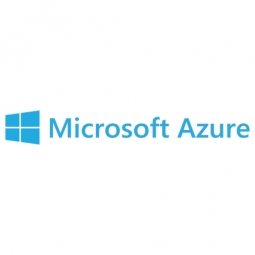Technology Category
- Functional Applications - Transportation Management Systems (TMS)
- Robots - Autonomous Guided Vehicles (AGV)
Applicable Industries
- Cities & Municipalities
- Transportation
Applicable Functions
- Logistics & Transportation
- Procurement
Use Cases
- Public Transportation Management
- Vehicle Performance Monitoring
Services
- System Integration
- Training
About The Customer
The customer in this case study is the Arizona Department of Transportation's Motor Vehicle Division (MVD). As part of the Arizona Department of Transportation (ADOT), MVD has a history of technology initiative firsts. Over 20 years ago, it led the nation with ServiceArizona.com, the first United States online service for residents to renew vehicle registrations, driver licenses, and perform other tasks remotely. The MVD is committed to delivering value to its customers and is constantly seeking ways to improve its services and engage with the citizens of Arizona.
The Challenge
The Arizona Department of Transportation's Motor Vehicle Division (MVD) was grappling with a 40-year-old system that was becoming increasingly difficult to maintain due to technical obsolescence. The outdated system lacked flexibility and was hindering the agency from delivering greater value to its customers. The MVD was keen on transforming its tools from being a roadblock to becoming a highway for delivering value. Another challenge was the siloed transactional model of ServiceArizona, which led to high degrees of inaccuracy, high risk of fraud, and the inability to detect fraudulent activities. The MVD was also faced with the challenge of securing state-appropriated funding for a large IT project.
The Solution
The MVD embarked on the Motor Vehicle Modernization Project (MvM) to overcome these challenges. The project was funded through a unique model that involved renegotiating MVD’s long-term, directed-investment contract with IBM. This agreement required a portion of ServiceArizona fees to be reinvested in technology improvements. The MVD redirected these funds towards building a new system, at no additional cost to the taxpayer. The MvM team leveraged Microsoft Azure Government cloud, SQL Server, and a full Microsoft technology stack to build a new portal called AZ MVD Now. This portal enabled residents to access MVD services remotely, at their convenience. In addition, MVD also deployed a super portal, eAZ, that could be used by other agencies and organizations to leverage AZ MVD Now identity, authentication, and portal technology.
Operational Impact
Quantitative Benefit

Case Study missing?
Start adding your own!
Register with your work email and create a new case study profile for your business.
Related Case Studies.

Case Study
Turning A Stadium Into A Smart Building
Honeywell created what it called the “intelligent system” for the National Stadium in Beijing, China, turning the venue for the opening and closing events at the 2008 Summer Olympics into a “smart building.” Designed by highly controversial artist Ai Weiwei, the “Bird’s Nest” remains one of the most impressive feats of stadium architecture in the world. The 250,000 square meter structure housed more than 100,000 athletes and spectators at a time. To accommodate such capacity, China turned to Honeywell’s EBI Integrated Building Management System to create an integrated “intelligent system” for improved building security, safety and energy efficiency.
.png)
Case Study
Smart Street Light Network (Copenhagen)
Key stakeholders are taking a comprehensive approach to rethinking smart city innovation. City leaders have collaborated through partnerships involving government, research institutions and solution providers. The Copenhagen Solutions Lab is one of the leading organizations at the forefront of this movement. By bringing together manufacturers with municipal buyers, the Copenhagen Solutions Lab has catalyzed the development and deployment of next-generation smart city innovations. Copenhagen is leveraging this unique approach to accelerate the implementation of smart city solutions. One of the primary focus areas is LED street lighting.

Case Study
Airport SCADA Systems Improve Service Levels
Modern airports are one of the busiest environments on Earth and rely on process automation equipment to ensure service operators achieve their KPIs. Increasingly airport SCADA systems are being used to control all aspects of the operation and associated facilities. This is because unplanned system downtime can cost dearly, both in terms of reduced revenues and the associated loss of customer satisfaction due to inevitable travel inconvenience and disruption.

Case Study
IoT-based Fleet Intelligence Innovation
Speed to market is precious for DRVR, a rapidly growing start-up company. With a business model dependent on reliable mobile data, managers were spending their lives trying to negotiate data roaming deals with mobile network operators in different countries. And, even then, service quality was a constant concern.

Case Study
Buoy Status Monitoring with LoRa
The Netherlands are well-known for their inland waterways, canals, sluices and of course port activities. The Dutch Ministry of Infrastructure indicates that there are thousands of buoys and fixed items in and near water environments that would profit from IoT monitoring. One of the problems with buoys for example, is that they get hit by ships and the anchor cable breaks. Without connectivity, it takes quite some time to find out that something has happened with that buoy. Not to mention the costs of renting a boat to go to the buoy to fix it. Another important issue, is that there is no real-time monitoring of the buoys at this moment. Only by physically visiting the object on the water, one gains insight in its status.




